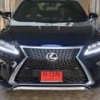Search the Community
Showing results for tags 'cost'.
-
https://www.straitstimes.com/singapore/more-spending-on-healthcare-does-not-mean-a-healthier-population-ong-ye-kung SINGAPORE - The Republic’s healthcare challenge in the coming years is not spending more, but to ensure that Singapore does not go the way of many OECD countries where healthcare costs are “spiralling and escalating out of control”, Health Minister Ong Ye Kung told Parliament on Wednesday. Better health outcomes can be achieved by continuing with Singapore’s sensible and practical approach of having different layers of safety nets – subsidies, MediShield Life, MediSave and MediFund – and combining it with the Healthier SG strategy to reduce the sickness and disease burden even as the population ages, he added. Mr Ong was responding to Progress Singapore Party (PSP) Non-Constituency MP Leong Mun Wai’s assertion on Tuesday that the Government has not spent enough to cover Singaporeans’ healthcare costs, and should be spending more to help with medical bills. Mr Leong had cited data to show that the Government’s share of healthcare expenditure is lower than the average among Organisation for Economic Cooperation and Development (OECD) countries. The majority of the 38 OECD members are regarded as developed countries. Mr Ong noted that it is widely accepted by health economists that spending more on healthcare does not mean better outcomes. For instance, the United States and Britain spend about 17 per cent and 10 per cent of their gross domestic product on healthcare respectively, compared with Singapore’s 4 per cent. Despite this, both those countries are facing a high incidence of chronic illnesses and high obesity rates, and expected lifespans there are lower than in Singapore, he said. Conversely, Singapore has delivered good outcomes given how much it is spending, while keeping healthcare affordable for the middle- and lower-income groups, Mr Ong added. Seven in 10 Singaporeans in subsidised hospital wards do not pay any out-of-pocket expenses, and nine in 10 pay less than $500 in cash. “So when Mr Leong asked the Government to spend more to lower out-of-pocket expenses further, he really meant to channel resources to unsubsidised patients, that is, those staying in A class wards or private hospitals,” he said. “This is where the big bucks and big expenditure are, and it will push our healthcare expenditure and spending to the levels of OECD countries.” Mr Leong also failed to mention that such spending ultimately has to be raised from the people through taxes, and made no mention of where PSP will get the funding from, Mr Ong added. The reality is that government healthcare spending has already been rising, having tripled between 2011 and 2020, and is expected to triple again between 2021 and 2030, said Mr Ong. Mr Leong had also called for increased spending from the Pioneer Generation (PG) and Merdeka Generation funds, as he felt that spending from those funds has been small relative to their total assets. This understanding is misplaced as both funds were sized based on the projected lifetime cost of the benefits, said Mr Ong. He noted that PG members are as young as 74 and “still have quite a bit of runway ahead of them”, though the Government will continue to review the adequacy of both funds. The Health Minister also responded to Workers’ Party MP Jamus Lim’s suggestion that Singapore’s medical infrastructure is too lean, and that the current hospital bed crunch speaks to a need to relook healthcare capacity. Mr Ong said every country is facing a similar crunch post-Covid-19, including the OECD countries despite their higher bed-to-population ratio. The reason for the bed crunch here is that the average length of hospital stay has increased by 15 per cent compared with before the pandemic, he said. This is likely a result of more older people falling ill due to an “immunity debt” as safe management measures were lifted, a problem exacerbated by poorer health from social isolation amid Covid-19. Singapore is catching up on healthcare capacity as projects delayed by Covid-19 – such as the Tan Tock Seng Hospital Integrated Care Hub and Woodlands integrated health campus – are now being completed, said Mr Ong. More transitional care facilities will also be set up to offer rehabilitative care for more stable senior patients. Closing the debate on the motion to support healthcare here beyond the pandemic, Nominated MP Tan Yia Swam responded to Mr Leong’s charge that drug prices were “marked up unreasonably for non-subsidised patients” in order to cross-subsidise others. Dr Tan, who is a breast surgeon, asked if Mr Leong had evidence that this was happening, and noted that non-subsidised patients are those who opt for an A-class or B1-class ward, or foreigners. “I, as a doctor, would think that allowing market forces to determine costings is fair, or would Mr Leong also want taxpayers to pay for everyone?” she asked. Mr Leong said he had heard “feedback from residents (that) they pay different prices when in different classes”, and that while it is understandable for services to be priced differently based on ward class, this should not be the case for drugs. The NCMP had earlier called on the Government to centralise drug procurement across public and private medical institutions, as doing so would reduce the cost of medicine. In response, Mr Ong said Singapore deliberately chose to have a variegated market for healthcare, with private-sector doctors having different business models. For instance, some private doctors charge very low consultation fees but make a margin on the drugs they sell, while others do the reverse, he said. “Sometimes you want to let market forces operate, but at the same time have some discipline through... what we subsidise and what we don’t, and I think that’s how we rein in unnecessary healthcare costs,” said Mr Ong.
- 19 replies
-
- 4
-

-
- healthcare
- spending
-
(and 5 more)
Tagged with:
-
It sadden me that these business owners are trying hard to avoid spending money on improving the safety of their workers, by painting a bad picture on the ban of using lorries to ferry workers. I am willing to pay more and accommodate the slight inconvenience for the safety of these foreign workers, who take up shitty jobs shunned by Singaporean. What about you? Singapore business groups warn of 'complexities', more traffic jams if firms banned from ferrying workers on back of lorries Source: https://www.channelnewsasia.com/singapore/complexities-traffic-jams-lorries-ferrying-workers-3669396 SINGAPORE: Any move to eliminate the transportation of workers on the backs of lorries for safety reasons involves "real, practical and operational complexities", a total of 25 business bodies said in a joint statement on Tuesday (Aug 1). The business chambers and associations, covering a wide range of industries, were responding to a call on Jul 24 by various advocacy groups and others for a timeline on banning the practice. That statement followed an accident in mid-July involving a lorry which appeared to be ferrying workers, with 26 men taken to three hospitals. This follows various accidents involving such lorries over the years. The statement from the business community, including the Association of Small and Medium Enterprises, released to the media, said: "In the process of transitioning to safer transportation modes for workers, it is essential to acknowledge that society must be ready to accept a change in the social compact." One consequence of transporting workers more safely would be more traffic on the roads and greater commuter congestion, it added. "The call for regulatory change to eliminate worker transport on lorries is a matter of great concern for us," added the bodies, which cover industries including construction, food manufacturing, marine and logistics. On Jul 24, more than 40 groups, businesses and individuals put out a joint statement calling for the Government to provide a timeline of measures working towards banning the transportation of workers on lorries. They included bodies advocating for foreign workers and other groups, a law firm, a music events firm, a mental health advocacy group and activists for a range of causes. Speaking to TODAY last month, Nee Soon Group Representation Constituency Member of Parliament Louis Ng said that he supports the Jul 24 statement, and had at the July sitting of Parliament also reiterated his call for such a timeline ahead of a ban on the transportation of workers on the backs of lorries. The business community's statement on Tuesday was addressed to Prime Minister Lee Hsien Loong, Acting Minister of Transport Chee Hong Tat and Senior Minister of State Amy Khor. The business groups said that the situation regarding safety in the transporting of workers had improved over the years but presents "real challenges that demand responsible and thoughtful engagement with various stakeholders". "Over the years, since 2011, we have taken significant strides in enhancing transportation safety for our workers, including the latest requirements under the Road Traffic Act, by closely collaborating with the Ministry of Transport and the Ministry of Home Affairs (the Traffic Police) and the relevant authorities. "As a business community, we are proud to share that many of our larger companies have successfully transitioned, either fully or partially, away from transporting workers on the back of lorries." The Road Traffic Act does not allow for passengers to be transported on the back of lorries, however it makes an exception for transporting workers employed by the vehicle's owner or if it is carrying someone injured in an emergency situation. The business groups' statement added that geographical constraints, limited infrastructure and economic realities that certain regions and industries face play a part in necessitating the widespread practice of transporting workers on lorries. "Regulatory changes have the potential to acutely affect industries that have historically relied on this practice, leading to potential delays in completing projects and risking the livelihoods of workers who depend on these industries for their employment." It also stated that the associations are "resolutely committed" to working closely with the Government, relevant authorities, labour unions, and safety experts to develop a "well-considered strategy" to ensure the safety of its workers. The statement ended by saying that the business groups appreciate the public's sense of urgency of addressing worker safety, and that they would "continue to navigate the complexities involved and actively seek innovative ways to enhance worker safety".
- 165 replies
-
- 11
-

-
my rear seat car door lock is spoil.. passenger cannot open the door from inside but opening using the outside is ok.. how much will the repair roughly cost?
-
https://www.independent.co.uk/space/chandrayaan-3-budget-india-interstellar-b2399203.html Some houses cost less than Indian space agency spent on getting to the Moon India has successfully landed on the Moon – for less than the cost of the film Interstellar. The Indian space agency announced on Wednesday that it had completed a “soft landing” on the lunar surface, near its southern pole. It becomes the first ever to land there, and just the fourth country to successfully send a mission to the Moon at all. And it did so on a very restrictive budget. The Chandrayaan-3 cost was sent to the Moon at a cost of about 6.15 billion rupees, or $75 million, according to Reuters. That is less than the cost of most blockbuster space films. Gravity cost $100 million, The Martian cost $108 million – and it was less than half the cost of Interstellar, which was filmed on a budget of $165 million. It even costs less than some houses. The UK’s most expensive house, for instance, went on sale at £200 million, or nearly three-and-a-half missions to the Moon. The budget is even less than India allocated to Chandrayaan-2, the previous attempt to land on the Moon in 2019, which ended in failure when the lander crashed. That cost around 8 billion rupees, or about 30 per cent more than the latest successful mission, though engineers have made clear that many of the learnings from that earlier launch had been integrated into the latest one. India has looked to build a reputation for cost-effective but still successful missions to space. It comes as the country encourages investment in the private space industry and businesses focused on satellites. The price of the whole Indian mission is similar to that charged by SpaceX for one Falcon 9 launch. That is charged at $67 million, according to its website.
-
Are prices in Singapore going up and what is the Government doing about it? https://www.gov.sg/article/singapore-is-it-really-the-most-expensive-place-to-live Singapore was ranked the second most expensive city in the world by the Economist Intelligence Unit (EIU) in its Worldwide Cost of Living 2021 survey. In its ranking published on 1 December 2021, Singapore was tied in second place with Paris, up from fourth position in the previous year. However, the EIU’s findings may not reflect the cost of living of Singaporean households and here are the reasons why. First, the composition of items in the EIU consumption basket is different from the typical consumption pattern of Singaporean households. The EIU survey is designed to enable Human Resource managers around the world to calculate cost-of-living allowances and put together compensation packages for expatriates and business travellers. The EIU consumption basket is not based on the typical consumption pattern of Singaporean households and is therefore not a good gauge of cost of living for Singaporean households. For instance, the EIU consumption basket includes items such as international foreign daily newspapers that tend to be more expensive than what Singaporean households typically consume like local newspapers. A more representative indicator of cost of living in Singapore is the Consumer Price Index (CPI), which measures the average change in the prices of a basket of goods and services commonly purchased by Singaporean households. Second, the EIU survey findings were compiled by comparing the prices of goods and services across countries and converting them from their local currencies to US dollars. This means that the rankings are sensitive to currency fluctuations. However, currency fluctuations have less impact on the cost of living of Singaporeans who earn their income in Singapore dollars. Are prices in Singapore going up? Nevertheless, like many economies around the world, Singapore is seeing higher inflation lately. Inflation in recent months has been driven by both external and domestic drivers. How have prices in Singapore changed over time? Based on the CPI, prices rose by 2.9% between July and November 2021, compared to 1.5% in the first half of 2021. This follows from a 0.2% decline in prices in 2020. You can access more information on the CPI from the Singapore Department of Statistics’ website here. How is the Government helping Singaporeans to manage rising costs? 1. Manage domestic supply-side constraints. This includes managing the supply of industrial and commercial space, to help moderate business cost increases and reduce the knock-on impact on consumer prices. During the COVID-19 pandemic, the Government has also disbursed rental relief and implemented schemes such as the Wage Credit Scheme, Jobs Support Scheme and Jobs Growth Incentive Scheme to help businesses cope with costs. 2. Promote competition in markets so that Singaporeans can enjoy competitive prices. This includes lowering barriers to entry, where possible. It also entails diversifying the sources of supply, including for food, to prevent sharp price increases in the event of disruptions. 3. Shift towards an appreciating path for the trade-weighted Singapore dollar (the Singapore dollar nominal effective exchange rate or S$NEER). A stronger Singapore dollar helps to mitigate imported inflation and temper domestic cost, to ensure price stability over the medium term. 4. Implement community support programmes. The Government has worked with cooperatives such as NTUC FairPrice on programmes to help Singaporeans cope with higher prices for daily necessities. In addition, Singaporeans can tap on these support schemes: GST Voucher - For eligible Singaporeans aged 21 and above. This includes cash payouts, MediSave top-up and U-Save rebates for utilities. Grocery Voucher - For eligible Singaporeans aged 21 and above living in 1- and 2-room HDB flats. This is to support household expenses. ComCare Assistance - Targeted support for low-income households. This includes cash assistance for basic living expenses, assistance with household and medical bills, as well as employment assistance and referrals for other forms of support.
-
Did a search but nothing came up. Where do you guys go for health screening? Packages?
-
Hi folks, Looks like my current budget only allow me to buy Avante 1.6A car in the range of 2008-2009 registered vehicles. As such, would like to seek fellow Avante drivers about the maintenance section. 1. do Avante like some older car need to change timing belt ? If yes, at what mileage interval (e.g. 60KM) need to change and how much $$$ ? And also, does it also need to change the water pump that usually associated with timing belt ? 2. How much is to replace the original shock absorber (4x) ? 3. How much to replace the aircon fan belt ? 4. Anything special about Avante car battery ? Can settle with $150 ? 5. So far anybody overhaul or change their auto gearbox before ? If yes, how much ? 6. Anybody replace their master brake pump ? If yes, how much ? The above is based on my current ride experience which I need to replace. Any other areas where I have missed, will be be glad if you can point out to me :) Thanks
- 823 replies
-
- 2
-

-

Some Singaporeans willing to pay more than $12,000 for a dog
kobayashiGT posted a topic in Lite & EZ
source: https://www.asiaone.com/singapore/some-singaporeans-willing-pay-more-12000-dog Would you pay more than $12,000 for a dog? Some Singaporeans can - and will. And demand for these costly canines shows no signs of abating, despite prices for many breeds ballooning since last year. Checks by The Straits Times found that a golden retriever can cost up to $12,800, compared with about $5,000 last January. A poodle can go for as much as $11,800, when one cost around $4,000 in the previous year. Demand for puppies surged right after the circuit breaker ended, and all five shops suggest that prices will continue to rise. Dogs are imported from places like Ireland, Taiwan and Australia, or come from local breeders. Nanyang Technological University student Isabel Joy Kua, 20, who bought her three-month-old bichon frise, Sunny, for $8,900 last month, said: "Several shops tried to get me to reserve a dog even before I interacted with it, which didn't make sense. But they said that if I went the next day, the dog would probably have been bought by another customer." A dog owner in his 30s, who gave his name only as Maxime, bought a local toy poodle last June and a pomsky - a pomeranian-husky mix - from Ireland in November. He told ST that once dog sales resumed on June 19, when phase two started, all the time slots for viewings at pet shops were fully booked for the first two days. Buyers said that they were willing to pay "pandemic premiums" due to money saved from cancelled holidays and work from home arrangements. Ms Kua had wanted a dog since primary school and finally managed to persuade her parents to let her buy one. She said: "We used the money saved on travelling to pay for Sunny." Maxime, who paid $10,300 in all for both his dogs, said: "Working from home during the circuit breaker period was a major factor for me as I now had time to invest in training the puppy." Others like Ms Joanna Cheng-Ajlani chose to adopt dogs from animal shelters instead. "To be honest, if not for the change in work arrangements for both my husband and myself, we would not have even considered a pet," said Ms Cheng-Ajlani, who adopted nine-year-old Polo, a Singapore special from Action for Singapore Dogs (ASD). Depending on the animal shelter, adopting a dog can cost between $250 and $531.50. While adoption queries were reported to have increased in August, the number of adoptions have returned to pre-pandemic levels for animal welfare groups Causes for Animals (CAS) and Save Our Street Dogs. In-person adoption drives have yet to resume. Mr Ricky Yeo, founder of ASD, said: "We are always operating at full capacity. While adoptions peaked at 247 last year, the take-in rate is still high." The organisation shelters around 150 dogs, of which 90 per cent are Singapore specials. CAS fundraising coordinator Christine Bernadette said while there is nothing intrinsically wrong with buying dogs, it is important to get them from ethical breeders. "Many buyers are unaware about the conditions that the parents of their dogs are subjected to, which often mean being caged and kept alive just for breeding," Ms Bernadette, 32, added, "There needs to be more education on the cruelty of puppy mills." -
I'm thinking of adding unichip to my car since IHE are all done and there are little else that could be done to enhance further legally. Just wondering if it is worthwhile to get a used unichip and then go for installation and tuning? How much does the tuning cost and any good installers/tuners? Thanks
- 10 replies
-
- tuning
- installation
- (and 5 more)
-
Still complaining about PAP and living in Singapore? Better go Malaysia? 😂😂
-
Hi All. I am interested to find out the price of replacing the hybrid battery for our vehicle. How much does it varies from brand to brand? Anybody had theirs replace before?
- 61 replies
-
- 1
-

-
- hybrid battery
- prius
- (and 5 more)
-
Hi Bros Anyone familiar with flooring cost for a 90m2 4 room flat? just living room and 3 bedrooms, new bto flat..looking at either parquet or laminate flooring.. Reason being, im going for my flat selection next week(first time as current flat was resale) and i do not like the OCS offered..seems overpriced and design not to my liking.. many thanks for you kind advice!
-
interesting article taken from an article on yahoo website... my vote goes to option (1) http://sg.yfittopostblog.com/2010/05/09/th...-a-global-city/ The price to pay for being a global city Did anything strike you as strange after reading today
-
https://www.yourmechanic.com/article/the-most-and-least-expensive-cars-to-maintain-by-maddy-martin
- 18 replies
-
- maintenance cost
- bmw
-
(and 5 more)
Tagged with:
-
A little surprised that car horns can break down. I mean, my Sylphy is coming to 9 years old only. I was told by the workshop that it is a common problem to Nissan cars. It's not the horn but the contact on the steering wheel that's worn. Appreciate fellow motorists in this forum can advise where to find distributors who supply the "pad" (to be mounted on steering wheel) for the horn. Perhaps, what is a reasonable price to replace the horn? Thanks! Also, looking for manual air horn to save cost. Hahaha!
-
Just realised that the bulb in one of my headlamps n the bulb in one of my foglights is down. Anyone ever changed before can ask how much to change ah n need to pay for labor charges? At same time e plastic cover of e foglight also cracked. Can it be replaced or need to change e whole foglight?
-
Hi folks, probably feeling a tad suicidal or something but was wondering if any of you here owned fiats before? I saw a listing for a used Fiat 500 manual and got me tingling abit. Was wondering if it is really as horrific as it was thought to have been? Or perhaps in some ways, the drive and ownership is somewhat rewarding? or the tradeoffs perhaps? Some tips of the trade or some some? Any tip would be good. Thanks
- 54 replies
-
- 3
-

-
- fiat
- fiatcarbuying
-
(and 6 more)
Tagged with:
-
Hi what is your cost per km for your car? Mine is about $1.50 per km travelled It prices in the coe cost of car road tax maintenance parking erp insurance fines and giving free trips to friends
- 51 replies
-
- cost of car ownership
- cost
-
(and 1 more)
Tagged with:
-
The true cost of driving in Singapore https://www.straitstimes.com/singapore/transport/true-cost-of-driving
-
Resale Value? Does it really mean resale Value higher? Some AD make 70% while most make 20%-30% premium.
- 26 replies
-
- 2
-

-

-
- premium omv
- profit
-
(and 6 more)
Tagged with:
-
The video below sadden me more than a bit: It just does not feel right about what we have been doing. But what to do? We need all the resources to build our infrastructures and buildings. But lets be mindful of the costs to other countries, whether we pay them fairly or not is another matter altogether. Our action is causing other people hardship, and that just feel terrible.
-
ok... im blur already after reading here and there on the process and cost......need help to guide me on the processa and total cost ok, let's say i have a car now with current number plate sss1234s and intend to bid for new number sss6789s. i know i can just go and bid for the sss6789s which cost me $1K. now, how should i swap my current number plate with the new one? how to handle the old number plate? how much it cost to do the paperwork?...any kind soul can provide a "guide for dummies"...
-
Has anyone keep a log of all petrol fill up, average consumption and cost involved ? I have all details in a great program.. called automobil ( For Palm )..It calculate everything from head to toe with graph.. Here the results of all the data since day 1 until now.. Here's mine below.. Current Fuel Eco ( per l ) : 17.3km Average Fuel Eco ( per l ) : 17.1km Avg Distance ( Month ) : 2,475km Avg Distance ( Year ) : 30,107km ( Computed ) Avg Cost ( Month ) : SGD $187.82 Total Cost : SGD $763.82 Cost per km : SGD $0.075 Date of last fill up : 3/10/03 Mileage of last fill up : 10,078 km NEAT NEAT Program... track my mileage,cost and averages.. If you want the program..I will attach it... its SHAREWARE..
- 103 replies
-
- Petrol
- Consumption
-
(and 3 more)
Tagged with:
-
Good morning and Blessed Christmas to everybody! Norwegian Airlines, an award winning European low-cost carrier, started operations in Singapore (flying London Gatwick to Singapore) back in late 2017 but they have since announced that they are stopping their flights to Singapore in Jan 2019. Had an opportunity to fly with Norwegian, London Gatwick to Singapore, in their Premium cabin. You can think of Norwegian like Scoot - their core product is in Economy low cost, but they offer a premium cabin on some flights, especially in their long haul ones, and they also operated the Boeing 787. This flight was from London Gatwick to Singapore. The full flight review video is below. Take note, the flight was from London Gatwick, and not London Heathrow. That morning, we took the Gatwick Express train from London Victoria station to London Gatwick airport. Norwegian has its hub at Gatwick, so the check-in lines were crowded. As we were in Premium, there was a dedicated line for Premium passengers. Unfortunately, one of our bags exceeded 20kg, so we had to do some instant repacking. Tip - weigh your heaviest bags first. After that little hiccup, we got our boarding passes and lounge invites, and were on our way. We headed to security, and we could use Fast Track (called Gatwick Premium). There was still a line for Gatwick Premium, but it moved much faster. Remember to put all your liquids in the clear plastic bags that they provided. MY LOUNGE - HOME OF NORWEGIAN From the security area, it was a very short walk to the lounge. The lounge that Norwegian uses at Gatwick is called My Lounge, Home of Norwegian. Fascinating, I didn't know that Norwegian had its own lounge. After spending about 1.5 hours in the lounge, it was time to board. The walk to Gate 34 took about 15 minutes, so give yourself ample time. Boarding was very smooth. Once aboard, the cabin crew served a drink (water or orange juice, no alcohol). Pushback was on time. Even though the single runway was pretty crowded - we managed to take off in good time. We were blessed to have departed from Gatwick shortly before the recent drones incident, where the airport was pretty much shut for 3 days! Thank God we got home safely and quickly before that drama. Check out the full pushback and takeoff video: As this was a day flight (departing Gatwick at 1050hrs), I didn't expect to be sleeping much. Shortly after takeoff, the drinks service began. Stewardess came around to offer drinks. In Premium, beer, white wine, red wine, water are complimentary. However, if you wanted spirits, you would have to pay. You can order from the touch-screen. See 3:15 of the video for the prices. LUNCH WAS SERVED - 3 CHOICES After drinks were served, the meal cart came along. As there were no printed menus, the stewardess had to tell us the options. There were 3 options for lunch - beef, chicken and fish (salmon). I chose the salmon with risotto, while my wife took the chicken dish. Both were very good. The meals were served in a fairly large box, with disposable cutlery. There was a small side salad and dessert. The main course portion was of a decent size and I certainly was full after eating it (including a warm bun). Food was tasty, no complaints. After lunch was cleared up, the cabin lights were dimmed, and most passengers tried to catch a nap. SEATS The Premium seats were comfortable. We were right in front, and I was in 1J, window seat. Let's be clear, this is not a lie-flat bed. But the seats and space were very comfortable. I noticed that in the Boeing 787-9, the configuration in Premium was 2-3-2, i.e. only 7 seats abreast. When fully reclined, the seat was very comfortable, and I certainly managed to snooze. Norwegian provided a comfy blanket, but no pillow, so bring your own if you need a pillow. MID FLIGHT SNACK About 5 hours before landing, when the plane was somewhere over the Indian sub-continent, cabin light were increased slightly, and a cabin crew came around handing out chicken wraps as well as water. I guess this was the mid-flight snack. The wrap was tasted ( I ate it all up!) BREAKFAST - 2 HOURS BEFORE LANDING The scheduled landing time in Singapore was 0730hrs (local time). Singapore was 8 hours ahead of London. About 2 hours before landing, cabin lights came on, and I could smell the food being warmed up at the galley. Not long after, the meal cart came out and breakfast was served. There was no choice - we were all given the same box, which contained About Overall, I found the service to be efficient, and even pleasant. Would I fly with Norwegian on Premium again? Why not? The fares were competitively priced and I think worth the money for a long-haul flight. The other perks at Gatwick like dedicated check-in line, Fast-Track at security as well as Lounge access were awesome too, and added to the Premium experience. Recommended. On a personal note, as I live in Singapore, I find it a pity that Norwegian has decided to end her long-haul service in early 2019, after only flying to Singapore for a very short period of time. I'm glad I managed to fly on this award winning airline during her short stint in Singapore. I hope Norwegian comes back! EDIT Sorry, typo in the title. Should be low cost carrier and not career.



.png)











